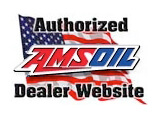25 Dec Hydraulic Systems Need Synthetic Oil
Viscosity grade and Viscosity Index (VI) is an indicator of hydraulic oil performance
Failures involving hydraulic oil systems often happen in cold temperatures. Significant time and money is lost every year in hydraulic equipment failures operating in cold temperatures. Why do hydraulic equipment failures happen most often in the winter? It’s due to poor maintenance, poor startup procedures in cold weather and continued use of a inexpensive hydraulic oil that thickens in cold temperatures.
Completing scheduled hydraulic-system maintenance throughout the year can reduce cold temperature downtime. Unfortunately, tight schedules, remote job sites and the need to keep equipment running at all costs can challenge badly worn hoses, leaky seals and other maintenance items which go unresolved for extended periods. The colder the ambient temperature, the more likely catastrophic failure will occur, and poor quality hydraulic oil may accelerate the failure.
Purpose of Hydraulic Oil
Hydraulic oil must protect moving parts from excessive wear, keep the system clean and free from varnish and transmit energy to complete a number of different heavy tasks. It’s critical that the hydraulic oil stay within fluidity range regardless of the outside temperature. During cold temperature starts, damage and accelerated wear can occur quickly if the oil gets too thick.
Causes Of Hydraulic System Failures
Damage and wear can be caused by starving the inlet side of the hydraulic pump (pump cavitation). This occurs during cold weather when oil becomes so thick that the pump is unable to pull fluid from the reservoir fast enough for continuous lubrication supply. Instead, the pump pulls air, components become starved of lubricant and metal-to-metal contact occurs. Overly thick oil also contributes to pressure spikes that blow hoses, filters and other critical components to help prevent this condition, most equipment manufacturers include hydraulic oil viscosity recommendations in their operator manuals and will often recommend thinner oil for cold ambient temperatures.
Synthetic Oil Solves the Fluidity Problem In Cold Weather
Synthetic lubricants provide a solution through a higher viscosity index (VI). High-viscosity-index synthetic hydraulic fluids remain much more fluid in cold temperatures while maintaining a protective layer of fluid in high temperatures. The higher the VI, the less the fluids viscosity will change due to temperature fluctuations.
Viscosity
The measurement of a fluid’s resistance to flow.
Viscosity Index (VI)
An empirical number indicating the degree of change in viscosity of oil over a given temperature range. A high VI number indicates a relative small change with temperature. Numbers above 95 would be considered high. A low VI number indicates large temperature changes. Numbers below 60 are considered low. High VI indicates the ability of the oil to provide protection over a wider temperature range as the fluid has a greater ability to maintain its consistency thus the greater protection.
The importance of this can be illustrated by comparing a cheap ISO 32 mineral oil with a high-VI ISO 32 synthetic hydraulic oil. Both oils have the same thickness of 32 cSt at 40°C (104ºF). But, the synthetic hydraulic oil has a VI of 160 and the mineral oil based hydraulic fluid has a VI of 90. When both oils are cooled to 10°F (-12ºC), the low-VI mineral oil thickens much more than the high-VI synthetic oil. Even though the oils a classified as having the same ISO viscosity, the high VI synthetic oil will flow much better at 10°F (-12ºC). This means better lubrication for the pump and less chance of a pressure spike, damaging cavitation or blowing neglected weak points in the system. Bottom line: Fluids with a higher viscosity index provide better protection in cold temperatures than fluids with a lower viscosity index.
Additional Benefits of Synthetic Hydraulic oil
Additionally, hydraulic oil need to fight varnish and sludge buildup most often associated with high-temperature, high-pressure industrial environments. Not all hydraulic oils are designed to provide effective resistance to varnish and sludge in these environments, and varnish and sludge are directly responsible for sticking valves and other operational issues. As temperatures increase, hydraulic oils become thinner. In excessive temperatures, some do not provide the required thickness to adequately protect against wear. Oils not formulated correctly for these extreme applications allow varnish to form after continual operation at high temperatures, and sensitive operationally controlled valves begin to malfunction.

Just like motor oils, not all hydraulic oils are created equal, and that is especially true in cold-temperature applications. AMSOIL synthetic hydraulic oils can greatly reduce cold-weather problems. They also provide outstanding oxidation resistance for longer fluid life and significantly better resistance to harmful varnish that plagues many hydraulic systems operating in hot industrial environments. AMSOIL has the hydraulic products to keep your customers running smoothly in both hot- and cold temperature extremes.

